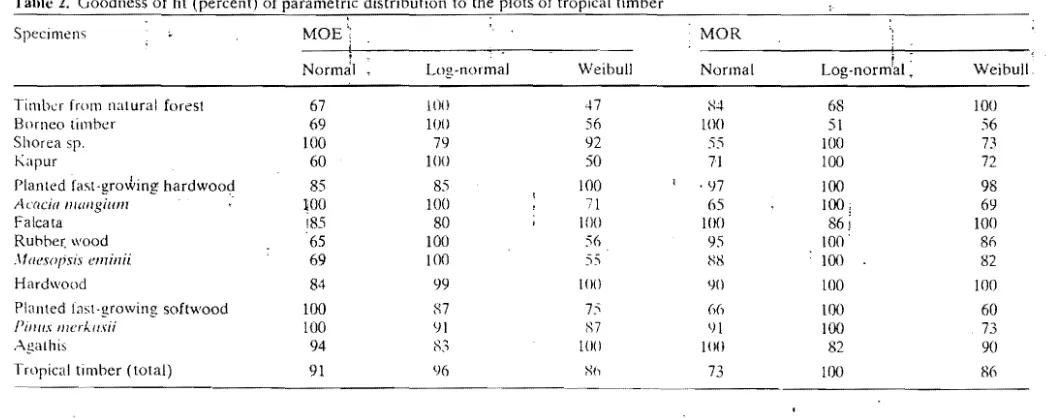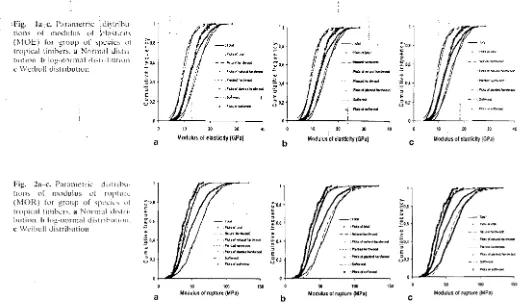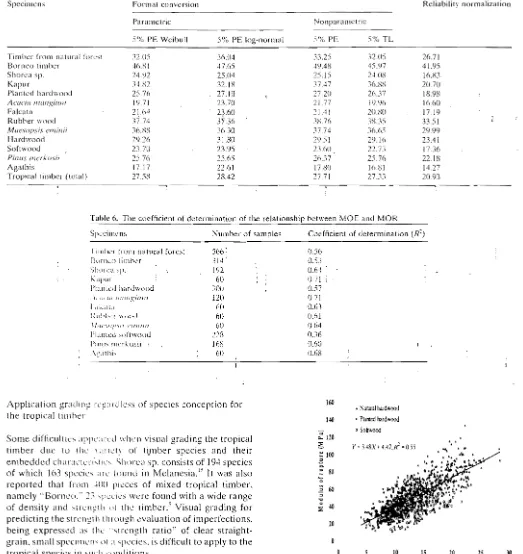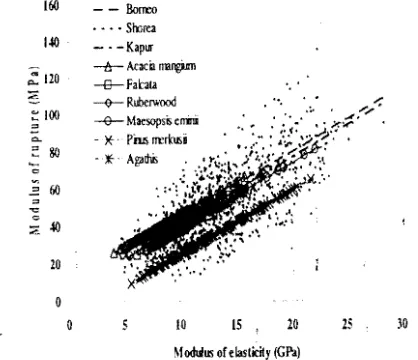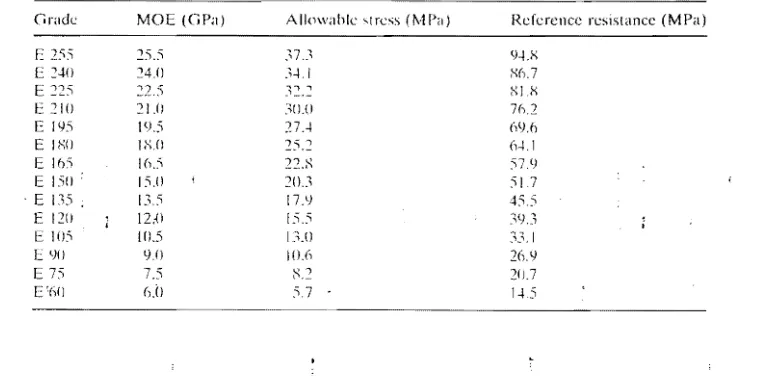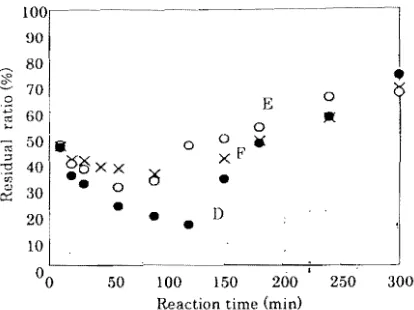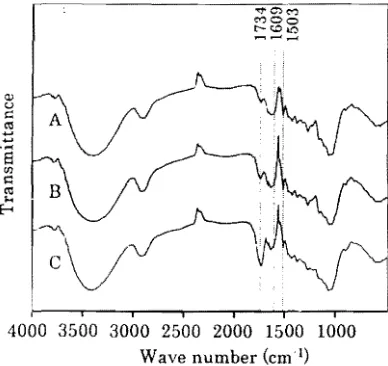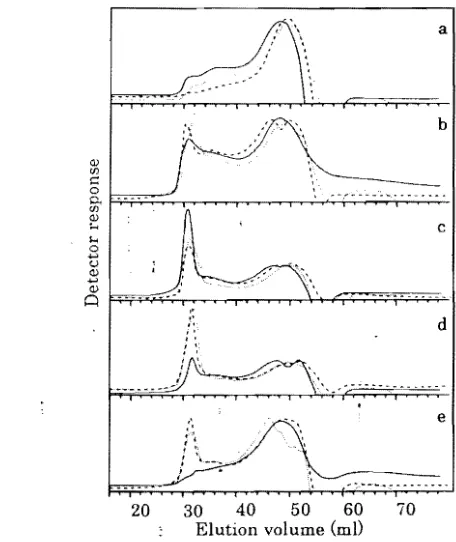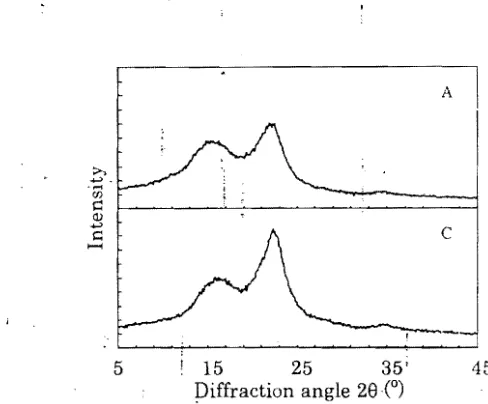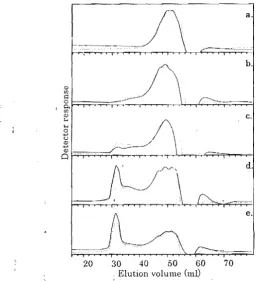I0.b. 1.
(l.Q.a..
i
jッセイョ。ャ@
of WoodScience Archieves
Page 1 of 1Mokuzai Gakkaishi (Japanese with English summary) publishes 6 volumes of high-quality scientific information every year. " ' " The journal features original article, note, rapid communIcatIon and invIted revIew. ISSN 1435-02111 published in Feb, Apr, June, Aug, Oct, Nov I
Table of Contents (including previews)
The Latest Issue: VoL51, No.6Last update: December 27,200517:31:00
\,101. 52 (2006) No.1, セ@ I セ@ I
1: ,
§ , and §Vol. 51 (2005) No.
1.
::? , セ@ •1: ,
§ , and §Vol. 50 (2004) No.1, セ@ , セ@ I
1: ,
§ , and § \,IQI. 41:) (2003) No.1, セ@ , セ@ ,1:
,R ,
and § |LiqQセᄃ@ (2002) No.1,2 ,
セ@,
1: ,
§ , and §YQI47 (2001) No.1, セ@ , セ@ ,
1: ,
§ , and§
'lQLA§
(2000) No.1, セ@ ,3 , 1: ,
§ , and§
Vol. 45 (1999) No.1. セ@
,
セ@,
4 ,
§, and §\,IoL4A
(1998) No.1, セLZSNL@4,
§, and §¢
Top 1About JWRS¢
Enrollment¢
Journal¢
Annual Meeting¢
International Conference¢
IAWPSJournal of Wood Science is edited and published by the Japan Wood Research SOCiety and published by Springer-Veri;:
Tokyo.
J
Wood
Scil
Volume 51 (2005)
Page 1 of2
Volume 51, Number 4 (2005)
Original articles
Miyuki Takeuchi, Keiji Takabe, Minoru Fujita
Immunolocalization of an anionic peroxidase in differentiating poplar xylem
317
Yoshihiro Hosoo, Masato Yoshida, Takanori Imai, Takashi Okuyama
The effect of day length on diurnal differences in the innermost surface of the S2 layer in differentiating
tracheids
323
Junji Matsumura, Y oko Yamasaki, Kazuyuki Oda, Y oshitake Fujisawa
Profile of bordered pit aspiration in
Cryptomeria japonica
using confocal laser scanning microscopy: pit
aspiration and heartwood color
328
Kentaro Abe, Hiroyuki Yamamoto
Mechanical interaction between cellulose microfibril and matrix substance in wood cell wall,
determined by Xray diffraction
334
Anita Firmanti, Efendi Tri Bachtiar, Surjono Surjokusmo, Kohei Komatsu, Shuichi Kawai
Mechanical stress grading of tropical timbers without regard to species
339
Masahiko Kobayashi, Toshiyuki Asano, Mikio Kajiyama, Bunichiro Tomita
Effect of ozone treatment of wood on its liquefaction
348
Dongxiang Wang, Kyoko S. Katsumata, Gyosuke Meshitsuka
Characterization of lignin fragments in alkaline oxygenstage waste liquor as soilconditioning
agent
357
Tadashi Oikawa, Toshiya Matsui, Yasunori Matsuda, Teruko Takayama, Hitoshi Niinuma, Yasuyo
Nishida, Kazuo Hoshi, Mitsuyoshi Yatagai
Volatile organic compounds from wood and their influences on museum artifact materials I: differences·
in wood species and analyses of causal substances of deterioration
363
Natraya Lourith, Takeshi Katayama, Toshisada Suzuki
Stereochemistry and biosynthesis of
8-0-4'
neolignans in Eucommia ulmoides: diastereoselective
formation of guaiacylglycerol804' (sinapyl alcohol) ether
370
Nattaya Lourith, Takeshi Katayama, Kimiko Ishikawa, Toshisada Suzuki
Biosynthesis of a syringyl
8-0-4'
neolignan in Eucommia ulmoides: formation of syringylglycerol80
4'(sinapyl alcohol) ether from sinapyl alcohol
379
Morten Eikenes, Gry Alfredsen, Bjorn Erik Christensen, Holger Militz, Halvor Solheim
Comparison of chitosans with different molecular weights as possible wood preservative
387
Eiji Minami, Shiro Saka
J Wood Sci/ Volume 51 (2005)
Page 2 of2
Notes
Jonas Blomberg
Elastic strain at semiisostatic compression of Scots pine
(Pinus sylvestris)
401
Oner Unsal, Nadir Ayrilmis
Variations in compression strength and surface roughness of heattreated Turkish river red gum
(Eucalyptus camaldulensis)
wood
405
Hulya Kalaycioglu, Ilhan Deniz, Salim Hiziroglu
Some of the properties of particleboard made from paulownia
410
Jianying Xu, Ragil Widyorini, Shuichi Kawai
Properties of kenaf core binderless particleboard reinforced with kenaf bast fiberwoven sheets
415
Rapid communications
Shinichiro Tohmura, Kohta Miyamoto, Akio Inoue
Acetaldehyde emission from gluedlaminated timber using phenolresorcinolformaldehyde resin
adhesives with addition of ethanol
421
Zhenfu Jin, Yuji Matsumoto, Takeshi Tange, Takuya Akiyama, Masanobu Higuchi, Tadashi Ishii, Kenji
Iiyama
Proof of the presence of guaiacylsyringyllignin in Selaginella tamariscina
424
Announcement
427
J Wood Sci (2005) 51:3:"1317
«)
'I'll.: Japan Wood Rl:scarch Socidy 20(1:'1DOl Hl.I(XI7/sI00?;(IOIl40MI·/
Anila Finnanli . El'cndi Tri Haehliar
Surjono Smjokllsl1ll1o . Kollci Kmmtfsu . Slmiehi Kawai
Mechanical stress grading of tropical timbers without regard to species
Recelvl:u: March 12.2001 ' .\lCl'ptcU: JUtlC 22,2001
Abstract Some reports have shown that for single species the c,)rrelation between modulus of elasticit\· (MOE) and
modulus of rupture (MOR) in bending is quite high. Tropi
cal timbers consist of hundreds of species that are difficult
to identify. This report deals with the mechanical stress grading of tropical timber regardless of species. Nine timber
'species or groups elf spc:cies with a total Dumber.of 109.+
pieces measuring 60 x 120 x 3000 mm, were tested in static
bending. The MOE ||G。セ@ measured flat wise, while MOR was
tested edge \\'ise. Statlsllcal analysis of linear regression
with a dummy model and anillysis of covariance were used
to analyze the role of l\lOE and the effect of species on
prediction of MOR. The analysis sho'1ed that using MOE as a single predictor caused under/overesti'mation for one or more species and/or ;groups of species. The accuracy of: prediction would be increased with species identification.
An allowable stress and refei'ence resistance for species
and/or groups of species \\ere provided to compare with the prediction of strength through timber grading. The timber strength class for species and/or groups of species was also established to support the application of mechanical timber grading.
Key words Regardless of . Mechanical stress
. Tropical timbers Allowable stress· Reference
resistance
A. Firnwilli
Resl:arch In,lilull: For Humall Sl:ll(,:l11cnls . .I1. Pan\·aulI!!<1I1·Cikull\ i
\.'v'Clan. Handung 4(KIU;';. Ind!lth'si,j .
E.T Bachliar· S. SurjokuslIllhl
Facullv of FOrl:Sln. Bog,'r .\"ri<:ul!urc Ullivl:r,in. KC'lIlpld, IPtl
Darlllaga Bogor I66?;O. IlId"I1,',i'l
K. KclIllalSU . S. Ka\\ai (
Rcscarch inslilull: 1'01 Sust,,;n.lhk Illll1H11H1'ph.:r.:. 1..:,,*, l'ni,c,.,il\'.
LJji (lll-lIilll. .Inl"")
'I'd tl{l771·3;';·Y,71: [,'" '.' I WWMQGセMNセVWQサ@
l' mail: sk.)wai(a.fish.k\.clt ••·ll..l.·.11.
Introduction
Be1ng a natural milterial. wood has large variations of
strength and stiffness properties among species and even
among pieces in Olll:: species. The variations of strength and.
stiffness are caused by defects or imperfections like knots;
Hョセュ「・イN@ size. and location in each piece O.f timber). slope of 19min, and interlocked grain. To guarantee structural
safety, prediction of limber strength is necessary. The
strength characteristics ,I(' a piece of timber 5hould be evalu
ated by nonclestrllc{i\l' methods. It can be done through
visual grading or mechanical grading or by combination of such methods. For simplicitv and economy, pieces of timber of similar mechanical properties are pla'ced in categories
called stress grades. l
Most tropical
cHャャャエQAイェセウ@
are blessed with a hiodiversity of;natural resources \\ hieh means that hundreds or thousands
of timber species are ;I\;tibhle for construction. In such
cases, the applic<ltiilll uf \ Isual grading is complicated clue to
the difficulties of 'pecic, identification and checking of the
imperfection condition. Predicting the strength of wood on
a scale thlilll2'h dellsity slwws a poor coefficient of
determinHtion (I( I. ,\ ウエャャ、セG@ on Norway spruce (Picca ahies)
reported that the I( \eIIUL' 01 the rel;lliol1ship bet\\een den
sitv and bendin2 ,Irengtil was in the range of O.160AO
キャセゥQ・@
the R'|L[ャャセilG@
nlll;e relationship「・H||セ・ョ@
the densityand knots \Va, Il..';':. I Ie1\\ ever. thl' stU'fness. which is nor
mally expressed ;1" thL' mudulus uf elasticit\· (MOE), is b\'
far recognized as {ill.' best prl'dictor of strel;gth.: The QQQPセエ@
common method 01 'IlIlilh: l1l<1chine!!rndl'd lumher is to
measure MOE.' ThL' N \ ,lJue of the
Qセャ。lゥッョウィゥー@
betweenMOE and bendin:: ,IIL'II::111 IIl10duius of rupture (\10R)] of
Norway spruce \"t' III Ih,' rang.: of O.'iIO.72.:· Previous
studies hmc sl1<m,',]1i1c
II'
\;due hctw.:en "tOE in Ilalwisetimber and MOl{ |BQセ@ (U,I lur '\Wcill IIli/lIgilllll limber and
0.53 for mixed tlcI11i(:iI \\i)\ld.' Combining 1\IOE \\ith knots
and olher d;lla gainL'd slight II11pW\el11(ll! ill HiセHG@ relation
ship h<.:l\\eL'1l "tOE <l1ll1 \!Ol{.
In the ;lpplic:llll'll tll Ilmher gr<iding and streng1h da'ises,
tile セエイ・AQァエィ@ il( ;1 PtL'CL' (\1' lil11her regardless cll spL'ciL':>
340
MOE. Most species arc groupcd together and the timber performances from such species arc treated similariy.
With reference to the availability of timber for structural
purposes consisting of many species in tropical countries. the <lpplication of mechanical stress grading needs to he evaluated.
The ohjective of this study was to evaluate thc
applica-tion of mechanical grading to tropical timber, which consists of timber fwm natural forest. timber from plantation forest. hardwood as well as softwood. It is expeCted that tile results can he utilized 111 structural timber design.
Materials and methods
The number of the specimens was 1094 pieces of tropical wood consisting of timber from natural forest [60 pieces of Kapur (Dryobalanops aro/1wtica Gaertner f.), 192 pieces of a group of meranti or Shorea sp., and 314 pieces of mixed unknown species namely "borneo" timber] ィ。イ、セVP、@ from plantation forest [120 pieces of Acacia mal1gillln, Willd: 60 pieces of falcata (Paraserial1thes Jalcataria, L. Nielsen). 60 pieces of rubber wood (Hevea brasiliensis, Willd), and 60 pieces of Maesopsis eminii, Engler]. ana softwood from plahtation forest [168 ーゥセ」・ウ@ of Pinus /l1erkllsii, Jセョァィオィョ@ &
de
Vriese. and 60 pieces of agathis (Agathis damrhai·a. Lam-bert Rich)]. The specimens were 60 X 120 X 3000'(L) mm when air-dried. For any piece of lumber. thc imperfection condition was evaluated based on the visual grading system of Indonesian Standard for Construction Timber (SNI 03-3527).° Based on the pia!l1eter of the knots, slope of the grain,: length of the wane. and oth.er visual grading param-eters. ;the timber was classified into the エィイセ・@ categories of class A class B. and that rejected as structural timber. Only timber that was classified as timber suitable for building construction was used as specimens.The MOE in ftatwise configuration with center-point loading was measured using a simple machine with a deftectometcr that can magnif\' the rcading about 40 times. In the measurement of MOE Ilat wise. the span was 2730 mm and the applied load \\'as セI@ kg. Before meitsuring the MOE ftat wise. the machine was cliibrated based on a certified dial gauge. The specimens wcre thcn tested in ftexural bending with three-point loading edgc wise with a universal testing machine \\ith a capacity of IOO tons. following the procedure of ASTM D 19S.' With consider-ation of the loading system. adjustment factors were applied to the MOE and MOR calculations based on the equilib-rium moisture content in Indonesia of IYX. and ASTM 2915.'
Regression analysis \\'as lIsed tu ;In;!Iyze the relationship between 1\101-: Ilat wise and i\IOR "r the timher. Hased un the regression clnalysis. the allo\l(\hlc stress fur the tropical wood and tile stress 」ャ。ウセゥヲャ」。エゥッョ@ \lere establisIH:d. The effects of timber species on the rvlOR of timber were an,l-Iyzed using analysis of cO\arianc'.' (ANC'OVA) with 1\IOE as the cm<lriant \ <triable and the model as shown in Eq. I:
)I" =,11
+
r. + li( X" - A) -"- I (I)whcre Y" is the measured MOR of species i and sample number;.,I1 is the average MOR. Tj is the additive effect of
species. /1 is the regression coefficient that expresses the dependency of MOR on MOE, X'I is the measured
-I
I
!
MOE. X is the average MOE. and Eji is the error of sample
number; of spccies i.
The hypothetical test was conducted through an F test by considering:
Ho: r, = O. there is no significant effect :of species or group of species to MOR.
For
H,: r,
*
O. there is at least one species that signi5cantly different MOR value to the others.shows a
The prediction of strength characteristics of the timber was analyzed through a model as described by Eq. 2:
Y"
= Ziiaj+
J(
X,,)
+
E"(2)
where zij is the dummy variable of species i, ai is a constant of the dummy variable and, J(Xij) is a function of the rela-tionship between MOR and MOE. Two hypotheses were
used as: .
1,
Ho:
131
=13,
=13,·
...
=/3,k
=" 0, species and MOE'jpr:ovideno
significant effect to MOR. i .HI: :3
13k
*
O. at least one species andlor MOE provide significant effect to MOR.2. Ho: species provide no significant effect on MOR when MOE is included in the analytical modeL
HI: at least one species ,provides significant effect on MOR; when MOE is included in the analytfcal model.
, I
Strength characteristics based on the allowable' stress design (ASD) and load and resistance factor deSIgn (LRFD) were established following ASTM D 2915H and ASTM D 5457."
respectively.
Results and discussion
Modulus of elasticitv and bending strength performance of the timber
MOE and MOR 8f timber are the two parameters usuallv used in the evaluation of the bending performance of timber in structural sizes. The MOE and MOR of timber may vary among t he species. trees, logs. and even among the sawn timber of one log.'" Variations of strength and stiffness are. in general. caL'sed by density and imperfec-tions. i.e .. knots. slore of grain. and interlocked grain.
The lowest \'alue of \IOE was 4.1 GPa found in AC<lcia
1I1{{lIgilln/ from the plantcltion forest a[1ei the highest \las
:141
Table I. Modulus of and modulus of of i」セエ」j@ timher
Specimens MOE (Gpal MOR ([\11',,) Moisture cOlltent (')h)
Min. \.1ax. Mean SD Min. \.1ax. Mean SD Min. Max. Mean SD
H art! wood from "a(Ural forest
Borneo l!!llher
ShOle;, 'I'.
Kapur
Plallied ヲLLセエ@ セァョャ||@ ゥAャセ@
hardwood
/\c{fcia 111t1Il,r;itull
Falt'alil Rubber wood
M(I('so!,si.1 cminii
TOlal' hardwood Planted fast-growing
soft "'oml
I'II1US II/C'rkusii
Agathis Tropical timber
(total) 'd K,J 53 nNセ@ セNi@ 4.1 0.2 6 . .'1
55 4.1 5.6' 5.6 7.6 4.1 RsNセ@ 21;.5 2)'1 2KJ 22.1 15.8 13.0 11.6 22.1 28.5 21.7 21.7 16.6 28.5 1'1.1 1:)3 iセNGA@ 14.2 1.):-: :-:.9 87 \0.6 12.0 13.6 12.6 12.9 12.0 13.3
4 I
·11 J.tJ 1.7 2.9 2.1> I.l 3.0
:u
4.5 3..セ@ J.h7 0
セLセL@ 4.3
u:-:
.10.0 D.N:no
11.6 11.6 15.:i 294 285 11.6 10.g 154 10.8 !O.R 1)0 lOKO 134.3 107.(, 92.0 '12.0 48:() 5G:7 70.8 134.] 672 55.'1 67.2 1343 '1'1.:-: 62.t; 5).1 56.1 セQNV@ -12.2 n.] 43.9 ..\5.8 54.7 37.1 34.2 44.6 50.6 2(U 15.4 20.1 22.2 D.I 15.1\ 8:1 7.9 10.2 20.1 11.8 8.6! 2.3 ?20.0 a'l 14.3 13<) 14.1 12.9 12.9 1.3:2 14,4 13.'1 12.9 13.8 14.5 13.8 12.9 l:-:A 184 16.7 17.9 IN.8 16B 17·9 18.7 18.8 1R8 18.1 17.6 18.7 18.8 15.5 155 14.9 16.1 15.6 15.2 14.8 16.3 16.2 15.6 15.8 15.9 15.7 15.7 1.'1 1.5 1.3 1..'1 I.l 1.2 0.9 1.0 14 1.2 1.2 1.0 lJ Ll.
SD. standard de"iation
Table 2. Goodness of fil distribution to the timher
Specimens MOR
Log-normal Weibull Normal Weihull.
Timber from natural foresl 67 100
Borneo limber 69 100
Shorea sp. 100 79
Kapur 60 100
Planted fast-gro-king hardwood 85 85
Acacia /lWllgilllll . 100 100
Falcata 185 80
RUbber. wood 65 100
;\fa(!so{isis (!lIlinii 69 100
Hardwood 84 99
Planted last·growing softwood 100 87
Pilllls lIIerkllsii 100 9f
Agathis 94 < .' go
Tropical timber (total) 91 96
' - - - '
plantation forest. The wide range of such values of timber from natural forest mHy be due to the cultivation system. Shorea sp. is a group of species occurring in the mixed unknown tropical wood commonly known as "Borneo" timber. It is reasonable to expect that the range of MOE and MOR of mixed tropical timber is wider than that of timher from plantation forest where the trees are well culti vated and homogenous.
Parametric distributions. namely. normal. lognormal. and \\eibull distributions were applied to evaluate the dis tribution. Based on the frequency analysis. the apparent
distribution was also analyzed to obtain the goodness of fit
of tht' parametric distributions. i.e .. normal distrihution. iャャセMョャャイュ。ャ@ distribution. and the cumulative Weibull distri bution.: ' II is not easy to recognize the fit of the parametric distributions to the actual frequency plots of the timber
47 H.:l 68 100
56 100 51 56
92 )5 100 73
50 71 100 72
100 . <)7 100 98
71 65 100 ; 69
100 100 86 ; 100
56 95 100 . 86
55 lit! 100 82
100 90 100 100
7:- 6(, 100 60
R7 'if 100 73
100 100 82 90
:-:11 73 100 1\6
.. MMMMセセM ..
generalized for all timber. Some species have a high good ness of lit 10 the normal distribution. some to the log:lOrmal distribution. and others to the Weibull distribution as sl1Llwn in Tablc 2. The parametric distribution and actual frequcllcv of the :vIOE and MOR of the tropical timber are shown in Figs. I and 2. Selecting the best fit distribution for the actual frequcncy values is important. especiallv for the !Ll\\er tail values in the establishment of allowab!e MOE セャiQ、@ MO R. In ASTi\1 [) :'157. the distriburion of timber is asslImed to he a WClhllll distribution while the European standnrd tends to assume a lognormal distribution."
\\ilh rdL't'cnce to Fig. l. fnr the lower tail values. the
k'gnormul and Wei hull di51ributions provide heller filS
than the normal distribution. but for Ihe othcr plols the
[image:6.617.46.561.62.299.2] [image:6.617.42.565.321.530.2],Fig, 1a-,c. Parametric ':distribu·
tions of modulus of A・ャセウエゥ」ゥエ \'
(MOE) for group of ウー・セゥ・ウ@ (;, tropical timbers. a Normal di;;ll,· hution. b log·normal distribution. c Weibull diStribution
E
セoNR@
a
10 20 30
Modulus of elasticity (GPa)
J.:t2
Tllhlc3. The distrihmioll ilnd their firth Iilllit
Specimelb MOE MOR
•• _ M _ _ _ _ _ _ _ _ _ _ _ •
Log-Ilornlal Weihnll Log-normal Wcihull
_ . _
-i. 1(, '/ II NIH):;' i. $ 1<"" 'I fI l\hl';'
T1!l1hcT 1.10111 natural 2Jll-: HlセV@ '1.1 Ih.:" -1.5 '1.3 4.04 0.33 2').X 66.6 .)4 16.:"
fOfC'!'It
BUrilen t'Ill her 2.6') Ol6 9.-1 Ih.1-: -1.6 I)Jl 4.11 1124 :Ili4 6X5 -It) NセkW@
Shun:a 'po セNVW@ 0.26 :-;,' 16..' 44 /\5 3.1)1 045 20.7 62.2 25 :10.6
K"pllr sp. :;:.60 0.32 I.X 1:'.7 3./\ x.) :3.1)) (US, 26.6 62.7 :l.O 21'.X
Plankd fasl- 2.2-1 (UII セL@ 10.1-: 4.1 :'..:1 3,nH 0:31 224 -I().2 .,.6 21.3
t:!"il\\'ing Ilardwood
/\(:acia Bャ[ャョォゥャゥOセL@ 2.1:' O.2X :;.1 Y.X 4.2 4.9 3.01-; '0.36 19.6 47.2 5.1 I(J3
raIe:.! ta 2.16 0.16 6.' ')4 (l.X 0.6 3.40 0.24 195 36.0 4.2 17.9
Ruhher wood 2,:i2 0.27 6.= I J.() 4.3 6.0 3.77 O.lR 30.') 47.1 6.4 31.2
;\-{U('.\OI),\i.\ eOlinii 245 0.37 7.2 13.2 -1.-1 7.7 3.XO 0.12 30J) 49·1 5.3 30.)
Hardwood 2.56 0.':1 15.1 3.h 7.0 3.1)4 0.36 20.3 61.1 セエR@ 2-12
Plan led fast- 2.51 0.2:' 7,t', 13.X -1.7 7.6 3jA 0.31 19.X 41.1 3.7 IY.6
gn)\ving softwood
: {'il1l!.\' I11crlwsii 2.52 0.27 7.6 14.2 -1:3
.
7.3 3.50 0.25 21.2 3;7.-1 -1.7 21.3Agathis 2.47 (l.II) 1'.4 12.9 6.2 X4 3.74 Oj3 18.7 Sill 2.7 14.2
Tropical timber (total) 2.54 0.32 WNセ@ 14.7 'セNNNLNH@
"
> 7.1 3.1;5 0.3X 235 56.0 :1.1 22.flI.. Mean of log-normal distribution:
.,..
standard devialion of log-normal distribution: I) . scale parameter of Wc:ibull distribution: (C shapeparameter of Weibull distribution: /<"". fifth percentile limit
·Pb!:Iti'..,..IiIoltlt<tllQd
Bイ[キセ@
[セャ、セnnエイャエGqi、@
o
b
Fig. 2a--c. Parametric di,tnbu·
tions of modulus of rupture
([,vIOR) [or group of SpeLlo 0'
tropical limber;;. a Normal dietr'·
butioll. h log-normal distrihulInn
c Weihull distribution
a
For ",aeh species nr セイHIエアG@ "I "I't'l·il'''. Ih,' Illl',11I ,\Ild the standard deviation olthe QHャセGiQHャイャQャ。ャ@ distrIbution. Ihe shape ami seale parameter 01 lhe \\c:ihull 、ゥセエイゥィャャャゥャャゥャN@ as well as the fifth percentile limit WL're ealculatc:d and arc presented
ill Table 3. An obsernllion to the lower tail (ll the
distribu-tion is important in order Itl rL'duce eIT()r in the establish-l11L'nt 01' ;tlillwahic slres'. [|iiャィャオセィ@ the g()odness of lit of the panlll1ctric disirihutiulls 10 tilL' actual fr,:quL'ncv of MOE
50 '00 ISO
Mooulus 01 rupture (MPa)
oKMセセセMMMtセMMセMMセ@
セHゥLA@
..
c
"
セgLV@
..
:; 0,4
"
E
セqLR@
10 !O 3(1 40
Modulus 01 elas!tclt'{(GPa)
C
SO 100
Modulus 01 rupture (MPa)
b
c
[image:7.614.67.579.62.282.2]c\nd MOR of the timher could not he specified as shown in Table 2 and I and 2: the rlifference セIヲ@ the lifih percen-tile limit of both the log-nomH)1 and Weibull dismbuliol1> \\,,'re rel<1tiveh' small as shown in Tabll: 3. As described abO\e the fifth percentile limit of the ['vIOE and \IOR 01 limber from natural forest was also higher than pl,ltlt,:Li limber. The セBoe@
or
planted sllft\\tlod \\i\S higher iィセャョ@ thaI()f planted hardwood, while the sl イlGャャセャィ@ (If phllllLd
hilrd-V1(Jlof ... I ....l ..rt1OtO>oC '_"'K.."",,(J3J!:
'Pirud/NMdNIVW_
- . . ;$Qi'tw*
p|ッiiBGセ@
10 20
'"
'0Modulus 01 elaslitity (GPa)
SO I..
,s.
[image:7.614.54.576.313.620.2]34.,
TlIhle 4. The allowable
Sp.:cimCl1s 1';lr<lIllclric (distrihution) N,H1param"lric
. ....MMMセM ....
5'X, I'E Wc:ibull 5t X} PE 5<X, PE :'1% TL II
Timher from natLlr;" forest BortH:o timber
12.112
11'.·1.'
1.1.19 11'.76
iセPY@
19AN
12.62 IXIIl
(1,036 1>.071
Shorca sp.
Kapur
Planted hardwo"d
<),XI I.UI iii 1.1
<),X6 12,67 111,67
9,90 1.1,75 111,71
'UX
14:;2 IfUx
11.042
(Ull :'I
rum
Acacia 1I1UIlgilllfJ 7 i(, yNSセ@ S,57 7.X6 OJliG
Fillcala sLUセ@ 9.21) K-l,l S,II) IUl30
rセャ「「・イ@ \\ ood I·P'6 14,71 15,26 15,10 (U))O
MlIcs('l'sis 1'11!illii
Hardwood
1·1'\2
tlS2
14.2'1 1252
14$6 11.62
1443 lUx
(Um; (Ulli
Softwood \).3l 9.43 9,21) Sl)'i O,02S
Pil1l1S lIIerkll.\ii 1111.1 I(J, I () HUS 10,1.1 (Ul22
Agathis
Topical timb"r (toWI)
6,76 10.x6
H,<)(J,
ILI'i
Hl.) 1(), 'II
6.02 10,71)
(!.O61 OJJl4
PE. point eSlimate: TL. tolerance Ihnit: I), rcimivc differencc between nonparametric point <:slilnate
limit (NTL) which was expressed ;;,s (NPE·\TL)f\PE
wood was higher than that of planted softwood. These ーイッーセイエゥ・ウ@ may be affected by the different characteristics of the timbers. Two distinct conditions that might affect
, MOE and セor@ are the presence of tracheid in softwopds
and vessels In :hardwoods and the differcnt formations of
knots in both, I,.'
Establishment of allowable stress and reference resistance in LRFD of species or group of species
The ba*ic concept of ASD is that ;the working stress in the membe'r of a structure should be lower or the same as the pr6duct of allowable stress of the member and correspond ing duration of loading.') The allowable stress is t he strength characteristic with the reduction of the safet\' factor. For example. in Indonesia. as well as in the USA. the safety
factor of bending strength is 1/2.l.kl' Based 011 ASTM' and
European Standards.14 the strength characteristic of the
timber is the fifth exclusion limit (R",,) of t he population
distribution. The strength characteristic of timber is analyzed using parametric and/or non parametric procedures,'
As mentioned above. the distributions of the timber could not be ea:;;ily distinguished, For parametric proce
dures. the allowable strength of timber specics ;l11J group of
species could be obtained from Table 3 with reference to
Table 2 for the goodness of fit. There are two statistical
ways for nonparametric procedures. i.e .. Ilonparametric point estimate (NPE) based on interpolated data. and nonparametric lower tolerance limit (NTLl based on order statistics. The width of the contident.·,; Inl<:nal is a sufficiently smail fraction of the mean with the '"<llues in the
range of O,t1l6 to (l.067, In such a CLlnliitioll. the allowable
value of modulus of elasticity :s the mean of !'vIOE as shown in Table I,'
Through parametric and nonparamc·tric procedures with the condition as mentioned ahme ,lI1d considering tile
safety factor of bending in 10 years loading llf 2.1.") the
strength characteristic and allowable strength is presented in Table; 4. With the sufficiently small values of the relative differen:Ce between NPE and NTL. the value of NPE as shown in Table 4 is the allowafule. stress for bending:' The allowable stress of any species or group species could also be established through parametric procedures with the small difference value between parametric point estimate (PPE) and ;S;PE or NTL.
The reference resistance for LRFD of the timber was
calculated 「。セ・、@ on the format conversion and reliability
normalization factor as mentioned il'\ ASTM D UTUWNセ@ For
mat conversion used the ASD load durationndjustment
1 •
factor of 1.15. LRFD time effect factor of 0.80. and specified LRFD factor for bending of 0.85.'The calculation based on reliability normalization factor was conducted using an assumption that the distribution was a Weibllll distribution. although the !!t)odness of fit of the Weibull distnbution for some species or group of species were lower than 100% as
shown in Tahle 2. In the reliability normalization factor
procedure. sample size and coefficient of variations are the
decisive factor" •
The referelKc resistance of a species or group of species established thwugh format conversion seemed higher than
the one エィイョャャセィ@ reliability 1l0rl11ali,:atiol1 as sh()\\11 in Table
5. When th..: e'"dficiell! of varia lion of the strength of a species is re!ali\cly high. the reference resiSl<1nce based on the reliability normalization would be much lower than the one from formal conversion due the reverse position of the coeilieient of \ ariation in lhe reliability normalization equa tion. Such phenomena indicate that the application of
LRFD 「セャウLセ、@ 011 the reJinbilitv nmlllaliz,Hion factm for
tropical エャャャャQQ・イセ@ lIeeJs n:ore slllciv.
With refereilce tll Tables 1.4. and ), the application of allowable stress and rdcrcnce resistance for species and/or group of specie'S \\ill mean very safe but incnicic'l1t liSe of
the limbe! dUe' tn the usc of the lifth I'crl'el1tIie 01 the
distribtHil1l1s <llld/or statistical l1onpill'alllt.'tric |。ャャャ・セ@ as the
344
Table 5. Reference re,istance of the of timber for load and resistance faclor based on ASTM 0 5457
Specimens Format conversion Reliability normalization
Parametric Nonparametric
5% PE Weibull 5% PE ャッァセョッイャャャ。ャ@ 5% PE Uサセセ@ TL
Timber (rom natural fore,(
Borneo timber
Shorea sp.
Kapur
Planted hard\\'oou
Acacia J!I{{II,t;ilfIH
Falcata
Rubber wood
Maesopsi,\' ("Illinii
Hardwood Softwood
Pinus lIIerkusii
Agathis
Tropical timber (total)
:1205 46.XI 24.<)2 :14.1>2
25.76 1').71
21.<14
37.74
:;6.RH
29.2()
23.70
25.76
17.17 27.58
3604
--17.65
25'()4 32.18
2?-1O 23.70
RセNVP@
37'.36 36.30
31.80
23.95
25.65
22.61
28.42
.,3.25 -1'1.48 25.15 3747 27.20
21.77
2141
3X.7h
37.74 29.51 23.60 2637 17.80
27.71
32.05 2(,.71
45.'17 41.'15
2408 16.83
36.gX 20.70
26.37 18.98
1').96 16.<10
20.1>() 17.19
3R3) 33.51
36.65 29.99
2l).16 23.41
22.73 17.36
25.7<1 22.18
16.01 14.27
27.33 20.93
Table 6. The coefficient of determination of the between MOE and MOR
Specimens l'umber of samples Coefficient of determination HrセI@
Timber from natural forest 566: 0.56
Borneo limber 314; 0.53
Shor<:<l sp. 192 0.64
Kapur (,0 0.71 i
Planted hardwood 300 0.57 .
.ltilt'lil !1!lIngiulll 120 0.71
Ld':<lld 60 0.63
I{uhhl:r wl,od 60 0.1>1
\/al'So/l,"l-\ CJ1lil1ii 60 0.64
Planled ,oflwood 228 0.36
Pinus mcrkusii I 168 0.60
.·\",llhi, 60 0.68
Application gradinf! rq:<l1'lllcss of species conception for the tropical til11her
Some difficulti.:s appL';llcd when visual grading the tropical timber due III Ihe \ an.:t\ of li,mber species and their embedded 」ィ。イ。、・イゥGセQ@ ic, Slwn:a
sr.
consists of 19-1 species of which 163 species <l1L' ruund in Melanesia. [, It was also reported that [rom -lU() pieces of mixed tropical timber. namely "Borneo." 2; 'peues were found with a wide range of density ane! ZGm\Zョセエィ@ "I til<.' limber.' Visual grading for predicting the strengt h I h rough <-,valuation of imperfections. being expressed ;IS I h.... ""I renglh ratio" of clear straightgrain. small specillll'l1<'; 01 ;t 'pecies. is difficult to apply to the
tropical speci<.'s in "lIch L·ollliitiol1S.
The MOE is In 1.11 lite b.:st p!'edictor of MOK2 Some
studies of セゥョセォ@ 'pc'Li," Icpllrl<..'d a relatively strong rela
tionship between \lUI <llld \1<)1{ of Ihe ャゥュ「・イNGセG@ Table 6
shows the イ\NGャ。AゥオAQセィゥー@ bL't\\L'C'1l MOE flat wise and strength
of Ihe limber of セHIiャャlG@ 'I'c'cics and groups of species. The
coefficient of determinatlull (/?') of the rdationship be
tween MOE and \J()I{ ()1 the known single speci6 was in
the range of (lh() til I!. 71. but it was lower for the mixed
species. When all (If tile "pc'cill1ells were taken inlo account.
y. H8X' 4.47.R' = 055
160
• 1\arural hardwood
140 • Plarled hardwood
' Soliwood
;;: 120
...
セ@
セ@ 100
'"
Q.
" 80
'Q
セ@
60
"
..,"
" 4(l ::E
20
10 15 20 25 30
Modulus of elasticity (GI'lI}
Fig. 3. Reh.lioll,hip
or
!\!()E <Iud MOR ill! group "I of trupicaltimbers
Ihe R' valu<.' was (l.S:" 。セ@ shown in Fig. '. 'file g' \alue of
softwood repr<.'sented bv Pinus lIIa/-;llsii and agathis was
0.36. Although the value was quill.' small. it \\<\, hetlL'r than
[image:9.614.61.584.66.620.2]"
セTZB@
Tahle 7. Equations for predicted MOR based 011 MOE or tile timber
Specimens or group of specimens Regression line
Borneo MOR IO.h7 + 3.11 1\10E
SIl<lrea sp. MOR ·UI J.II MOE
Kapur MOR 7.6-1" 3.11 MOE
.-\erreia Jlllll1gilfllr MOR セ@ I U,6 + 3.11 MOE
Lltc'ia '\101< セ@ :U,6 .t. 3.11 MOE
Rubber \\ ,,"d i'>IOl< 7.5-1 + :l.11 MOE
"'I!lf"IJ/J.,is t'JJlinii MOR = -176 + NセNii@ MOE
!'jlll/.\ IIlf'rku\i, MOR = 9N) 3.11 MOE
A 2:;'lhi, MOR セ@
:un
3,1 I MOEthe mean \alue of the strength was' similar to those of
Acacia l/laligillllL rubber wood, and Maesopsis ell1inii
RC
from the hardwood. The value of the relationship between MOE and MOR of slich
a
combination was less than 0.30.Because the R= value of MOE and MOR of all timber ウーセ」ゥュ・ョウ@ in this experiment \.vas 0.55. MOE is a'good predictor of MOR. although the application of using MOE as a single variable would cause the over/under,estimation of MOR. at least for one species as expressed by the high value of allowable stress F 」。ャ」オャ。エ・、セャiQ、@ a very small significant value, The hypothesis that at ieast there is a species pfovid-ing aMOR value significantly different from others 'could be acceplcd. The fact that there is at least one species pro-viding significantly different MOR endorsed that the identi-fication of the timber species will improve the prediction of MaR through MOE from 74.2% (R2
= 0.55) to the range of
77.5% (R= ,= 0.60) to 84.3% (R' 0.71).
Tbe prediction equation of MaR based on iMOE was obtained through the regression dummy analysts with ma-trix variables for species and/or group of 'species. It was found that species and group of species and/or MOE gave a signiflcant effect on MqR with the high calculated value of
F and very small significant value. The hypothesis that at least one species and/or MOE provide significant effect on the MOR is accepted. The regression line of the species and group of species is shown in Table 7 and Fig. 4. Using MOE
as the strength predictor regardless of species will overesti-mate MOR for softwood. especially Pinus merkltsii. as shown in Fig. 4.
Although the timber from natural forest is still dominarit
in the timber constI'uctioll industries in some tropical areas.
promotion of the utilization of planted timber. especially fast growing species. has been disseminated for some de-cades. Becallse the selection cutting policy has been applied since the early 19i'\Os. the mailability of some selected species for timber construction has decreased, In many cases. rough カゥウオLセQ@ grading and small cIe"r specimell test results have been applied for predicting the strength of the timber. For the unknown species from natural fores!. it is classified as a second class limber although it covers a wide nmge of strength.' The utilizatiull of timber from fast grow-ing trees is not yt't popular due to the opinions Oil such timber as being of low grade !In' construction. With such background. t.he application of mechanical timber stress
160 --Borreo
, , , - Soorea
l.w
---Kapur-tr-A£oeia QQャャセ@
;. 120 -B-Fak:ata
..e
::: 100
"
Q.
-;: 80
-<r-Ruberwood
" Lセ@
セm。・ウッーウゥ[・イイゥョゥl@
)i;. pm; rrerkusi
Agaihli
. *'
';;
60
" "
""
:;
'"
.w
20
0
0 10 IS 20 25 30
MoowI1li of elasticity (GPa)
Fig. 4. Regression line of MOE and MOR for species and group of
species
oC
tropical limbers '160
140
Regression Ime :
;. 120 Y 3.52 X + 6.66, R' 064
:::<' ::: 100
.::
;: 80 ';;
60
"
'>0"
-
".w.
....
Allowable stress line
Rセ@
=5%EU/2.1
.
J0 MMMMMセセセ ..MセNセMMN@
0 10 15 20 ; 25 30
[image:10.614.349.558.53.233.2]Modull1l of elasticity (GPa)
Fig. 5. r」Zセイ」ZBゥBョ@ line. )<}o exclusion limit. and allowable stress line of
tropical Ilard",\od
grading tu tropical ーャセキエ」、@ timber, based on MOE with regard In ;lIl;.\OI rcgardless of species is very important.
Estahlishn1l:nt 01 timhcr strength classes
Although the rcgression line of agathis is close to hardwood as slwwll in fiセN@ -I and Table 7. there is a tendency for MOE
to prcdlct lu\\c'! \'alucs of MOR than those of hardwood,
With 」Aャョセゥ、cャ。エゥャャョ@ I hat PillllS merkllsii and agathis would bc o\·erc:s\lm;ilcd. the :imber strength classes regardless of .;pecie'i W(j'i l''iI:lblishL.''d on!\' for hardwood with the regres-sion linc and thl.' :'i'\. cxclusion limit as shown in Fig. :'i.
Exclusi()n of tht.' values of softwood from the equation as shown ill Fig..セ@ il11pnl\cd the relationship of \[OE and rvlOR to ().()..f ;I'; showil in Fig.. 5. The strength 」ャ。ウウセウ@ of
timber were deri\cd 「。セ・、@ on S'Yu Exclusioll limi[ (R",J of
ASD alld LRFD ;IS セィHャ||ョ@ in Table K The referellce イセウゥウᆳ
[image:10.614.46.296.75.187.2]Table II. Timber strength classes for ASD and I.RFD hi.scd 011 l11e'chanical strcss grading for
hardwood timber of
Grade MOE (GPa) Allowable "ress (tv1Pa) Reference resistance (MPaj
E 25) E 2·t(}
E 225 E 210 E IliS
E INO
E 165
E 150 : E 135 E 120
E 10') E l)(J E 75 E'(i()
25.:1
24.0
22.5
:21.0
195
IN.O
16.5 15.11 13.5 IVI
10.5
l).O
7.5
(i})
37.3 3-11
NZイRNセ@
'lO.O
17.-1 25.:::
RRNセ@
セHI ..\
17.l) 15.5
1-'.0
10.6
K2
5.7
9-I.X X6.7 til.X 76.2
6S1.o
VセNQ@
)7.9
:i1.7
45.5 ?'Y.J
33.1
26.li
20.7
I-IS
adjustment factor of US. a LRFD time factor of 0.80. and a ratio of live to dead load effects.of 3. and specifkd a LRFD resistance factor for bending of 0.85. The format conversion reference resistance is computed with the design equation·j
as below:
LFRD: <J( 1.2D + 1.6L
ASD:
where
i,
is tht: time effect factoL tfJ is the resistance factoL R"is tilC reft:r.:ncl." resistance, D and L are the dead and live load effects. respectively,
Kd
is the load duration factor (for ASD). and·/-, is the allowable stress (for ASD).The format conversion refert!nce resistance is computed by multiphing thl." ASD resistance by the format conversion' factor (K,l. \\herl." it is calculated as:
K, = (R, J
I:
<1\where tfJ. ゥセ@ the セー・」ゥヲゥ・オ@ LRFD resistance factor.
Till." 11rnj1("l..'d strength classes of the timber provides widl..'r stlcll!!th classes than common grades for machine-graueu IUlllill."f iestablished bw the Ame'rican Forest Product
SociCly' "Illi Ih'(" .i;lpanesc s;andard for timber structures.I"
The upper parts of the proposed strength classes are occu-pied by I he hilliJwood from natural forest which is usually
Cllt ill o\L'i'5 \',',(1"''; while the plal;led hardwood is mostly
cut at bCI\\l"L'1l It) <l1](j 25 years, depending on the species
and the purpOSl"
or
t he plantation. With reference to Tables-I and 5. thL' all(l\\ahk stiffness and strength properties of planled h;nd\\ll(l(l limber are almost the same as those of softwood III ,uhtlilpical areas.I.H,
In prill'llc:! ;ljlplic<ltill11. timber identification is not easy. l'speci:tll\ 1,,1' I11I\Cci tropical wood and shorea sp.. which consists IH hundrcds species. Therefore, timber strength classes tklt ;11'1' regardless of species are desirable. When a limber sl'l'ciL's is IIot well recognized bv ciesigners. the til11bl."r stre'llgth classes that are regardless of species as showll ill [;[hle' l' セィサIオャ、@ be applied because tlley are more CllIlSL'rV<l;r'L' 111;111 till: strength classes for specific species as shown ill 1:lhk 9. With various spccies in it group. the
timber strength classes for a group of species. namely "Borneo" and shore a sp., were not proyided. [n the design stage. the timber strength classes that are regardless of spe-cies as mentioned above and shown in Table 8 should be applied for such groups.
Conclusion
Timber is a natural material with the embedded properties from the エイ・セ@ and those obtained during the production process. The MOE and MOR of timber were in wide ranges and the distributions
of
the ュセ」ィ。ョゥ」。ャ@ performances did n<{t clearly fit one parametric distribution. i,e .. normal. log-MrmaL or Weibull distribution: The allowable stress for timber produced inefficient prediction. To effeCli\eh utilize timber as a structural materiaL timber grading can be applied visually and/or mechanically. With \arillUS timber species available and technical difficulties ill a]1p"'-ing visual grada]1p"'-ing. mechanical grada]1p"'-ing with MOE as the predictor has been studied with regard to and regardkss of species.The ANCOVA statistieal analysis showed that using
VIOE as a single variable for predicting MOR caused under!overestimation for one or more species <lIlLil1l
groups of species. The percentage of the accuracy
or
predic-tion would be increased with species identificatioll. TilL' analysis model with dummy regression found that .It k:I'[one or more species showed a significant effect 011 MOR. It was abo fou nd tha t PillllS merkllsii. as a tropica I soh \\\1( lli.
produced a significantl\" different MOR for til\." Sdml' 7\.! t ) I-'
\\hell compared "jlh other timber.
Tile harclwood timber strength classes had hl."l."l1 P'''-posl'd to support the application of mecha nicalt imber セiイャBs@ grading. To anlicipate the application of tllc LRF]) CllIICl']ll
in gillbill 、・カ・ャッセQャQQ・ョエN@ a reference resistance b:lSL'd 011 ウエイNZウウMァイセャ、」、@ timber has al:"o been established thrllugh
IlHlrl' 'l'se,m:h studies ill strength characteristics
or
tropical [image:11.614.128.509.74.262.2]347
"
( ira,k tvlOE
Kapur E 22.' 21,5 .12.2 XU
['2111 :' 1.11 セエINW@ 75.5
[ lY5 IY..' ⦅セW@ ..セ@ (i'.u
F IXO IX.O RセNy@ ():,,2
E I
I,.'
1 I •.. , セRNT@ .''I.U1 15O LUI 211.11 50.X
Ie lGセ@ I.' ..' 17 ..' 44'()
E 1:'11 1:'.11 I セNZZ@ 3:-14
. l:'ariu l1/(tllgililll E 1-;11 15.<1 RZGNセ@ • (i:l. 'I
E iZ[セ@ I ! , -,__ . I ':>7.7
E 1211 11.0 20.3 5U
E II:' 10:' 17.1-' 4S4
E ')0 'I.1i 1:",-\ Zwセ@
E 75 75 13.0 33.1)
I·"kata
E hO
E 150
6.11 1:;11
10.5
"
.,
26.1\ sedE QQセ@ 1:;5 19.7 SO.2
E 120 11.0
In
439E 10:' 10.5 I·t') 37.1\
E 90 <) .Il 12.4 3Lh
Rubbcr wood E 165 16.:' 26.& 67.7
E 150 15.0 24.2 fi1.S
E IJ5 13.5 21.:-: 5).3
E 121l 120 IY.:" 49.1
E 105 Ill.:" 16.'1 ·:1:'..0
E YO <)0 14.5 36.H
\/IIC.\()[,si., ell/illii E 21.0 21.0 3l.X RO.7
E ャセZG@ 1':)5 2,:).'-, 7-1.5
E iセHI@ u·ui 26.<:1 VセS@
E 16.' 16.5 245 ·62.2
E 150 15.0
no
:'().(JE QSセ@ 1.,.5 1<:1.6 -IlJ.1-'
E 120 12() 17.2 MiセNV@
E 105 10.:\ 14.7 :'1.-1
.-\cknowlcdglllenh The ,lulllllrs sincerely ackl1(lwit:dgc th" litwilcial
,ul'pOrl
"r
the R,>earch Institute fnr Human Settlement of Indonesia.·1 he in\·aluahk slIppnrt of AtProf. セ、N@ Sato of Globnl Agricultural
Sci<:nces. Graduate School of Agricultural and Life Sciences. The Uni·
\ ,·"it\ llf Tokl". Japan. is highh· appreciated.
References
1. Kr<:tschmann DE. Gr<:cn DW (I ')99) Lumber Slr..:ss grad," and
allowahle prnpcrtic:-<. \Vnod handbook: wood RS an i..'ngil1i..·\..'ring.
material. Forest Product Llhoratorv U.S. Department of
Agriculture. W'lsltington. DC. Chapter 6. pp 6.l-().I-I
, Joi1an,on ('1 イZZHIャャセI@ Grading of limber with respect to mechanical
propertic:;. Timhcr engineering. Wiley. New York. PI' 2:\-·J.'
, Steffen A. Juhanssoll C.I. Wormuth EW ([\)')7) Studl· 111 the n:la·
li()nship bt:t"·,'cn l1aH,isc and (;dge·wisc moduli UI cla,:ti·jtl 01
ZM[セi||Gョ@ tifllh,...'r Lャセ@ セエ@ I1h",'ans (0 ilnrrovl.' l11edllll1lnd ウゥイlGAャセャィ@ セイZ|、ゥョァ@
lL'dllHllo:.:,·. Hull Roh \\erksl ZGセZRMQGゥMZZGZGNG@
L Finnanti' :\. Suriokllslinlll S. Komatsli K. Kawai S (:>110-1) The
l.':'.labli:-;hl1h.?ll! 1.)1' セエイ」ョァZHィ@ chanlcleristiL' ()f fasl gn)\\ ゥョセ@ tlLde!;1
11langiuI11 lun[','r fur SlrLKtural materials. (Submitted)
.'. Finn<ll1ti A I Itll)(») llasi, concepl
or
timhcr gl·admL: in 1I1<1,"le';1:<Journal M:1>:1l:1iI Banglillan. -'6: 1-4. 7·11
(,. Ind,mc-sian St:md,lldi/:Jliul1 BoanJ (I '!')I) Standard qualil\ "I· IHll·
her rdf ィオゥャ、ゥAャセ@ ZLャイオ」エlャイlセ@ {in 1I1thHh..'",ian). SNI 03 セUMRM .i;lk;lrLI
7. ASTM Standard D 198-1999 (2{X)O) Stanti;lId lesl illetilod, of
static t<;:,ts of lumber in structural SiLt:' Vol [1·1 111. \\"0'1.
Phi ladeII'ilia
8. ASTM Standard 0 2915·1<:1<:17 (20IHl) eカ。ゥャャ。エゥョセ@ <tllo\\ahk
properti,'s (or gr,Klc's of strlIClLlra1 lil11her. \·,,1 11-1.10. \\·"ocl.
Philadelphi:!
'!. ASTM Sl.lIldard D·:'-I.'7 (I ')')7) Standard sp...·cilicatioll f,)r ctl!1lplll·
t!lg rcfcrclll't.: fcsI::.tanCe of \\'000 ィゥNiセiNNZ、@ IHidcll;ti:. alld ,,truclural
cO!lIlecti')lh (,'r Ipad and resistance factor 、cGQセil@ \ ·,,10-1.10. \\·,)O'\.
Philaddpilla
10. Gloss P (1993) Streng.th grading. 51,'!, f l l l ..rortecil LectL:rc·. (,
A6:1-0:
II. Horic l" 11 ')'; I Tile statistical and 1'1 "h'1htlll' lllclhnd .. I 11111b"1
strength data (in Japanese). Timr.c·l Fnglll,·c'flll!! Inslllutc
Sunaga\\ ;1-1 lokkaido. Japan
12. Brown HI' l'al1,;hin AJ. Forsaith CC (1'1.1'11 " . " b""k "t "<lod
tcchnolo\!\ Sllllctlirc. identificatiull. dele-cb. ;lIld thCs "Ithc' ,',1111·
mc'rcia! ;'·"tld, "f the United Slat.:,. \ .. 1 I \ldir:II\·lIill. \,'"
York. PI' I 11·2:;'>
13. iョ、、ョエNZウゥセャエャ@ S'.1I1l1ard Board {RHスサIセI@ l \)d", til ),1,ld!l:"" !\ll (1:nhL'r
cotl,tru,·,i"i1 \tll InLilllle,ian). S"<III.'. ;.'.j l"k"rl.l
14. Europ";1!) (·"Ill111illc-c fllr Standardi;:lIiPIl HャHャGiセI@ I." .'0:1: セQZQiGᄋ@
lunlltimb\..'! dC'k'rtllil1atioll ur char:lck·li'lH.: \;tllie tJ! Ilh,:clL\llicai
prop.:rtic,z :uld densil\·. Brllss,:b. Ikigillill. p I.,
iセ@ Soc'ri:1111·,,:JLI I. L,'lllll1cllS RHMJ (1'Il).i) Tim!;c·r Ir<"",· :1\;'101 ."'11·
l1lerciallimb,'r-. l'ud\,L". W;1gcning,'n. 1'1' ."'1·-1.'-1
,I Wood Sci (200:') 51 ::;41\--:;:'6
001 10,1 007fs I ()():\6-004-06(i4-<)
Masahiko Kobll),ashi . Toshiyuki Asano . Mikio Ka.iiyama Hunichil'O Tomita
Effect of ozone treatment of wood on its liquefaction
Received: Febrw\1'\' .1. 200-1 i Acc,:pted: June 23, ZOO"
Abstract The effects of ozone treatment were investigated to improve the process of liquefaction of wood with polyhydric alcohol solvents, The liquefied wood having a high wood to polyhydric alcohol ratio (WI P ratio) could be prepared by using the wood treated with ozone in the liquid phase, tィセ@ liquefied wood with a WIP ratio of 2: 1 had enough fluidity to act as' a' raw material for che.mical products.
trc
get some information about the effects of ozone treatment toward the wood components, cellulose powder and steamed lignin were treated wilh ozone and liquefied. In particular. ozone treatment in the liquid phase was found to be effective for wood and cellulose powder. On the other hand. steamed lignin self-condensed during liquefaction after treatment with ozone in the liq'uid phase. tィオウセ@ ozone treatment ーイッカゥ、・セ@ lignin with reactive func-tional groups. and caused the subseqw,;nt condensation reaction. Although lignin was converted t() a more condens-able structure ozone treatment. Ihe condensation reac-tion was found to be supprcssed f()r I\{loci during itsliquefaction. The wood liquefied proLilich displaved good solubilities in N.N-dimethyl fonn,llnidc 11)[\'1 F) even after treatments of long duration, It was sllgi!CSI..:d that one of the main effects of ozone treatment tow;jrd w(lod W<lS the
de-composition of cellulose.
Key words Liquefied wood· OZOIlC Irc<ltl11L'nt . Cellulose powder' sエ・。ャセャ・、@ lignin' Condcnsation j,_,;tClio!l
M. Kobayashi ( 1
Composite ProdliCls Laboratofl'. f)eparlt11elll ..I \\<I"dllcl',·"
Materials, Foresll'\' and Forest Producls RC'L'''I,'I\ In'lllul,'.
1 Matsunosato. TSlIkuba J05·R6X7. Japan
Tel. KXゥMR\IMrWjᄋNGセQQ@ (e:\1. 5-'7): Fax ;','-:1· '''';-) [LGセiェ@
e-mail: masa735'0'llpn,affrc,gn.jn
T. Asano
Ibaraki Industrral tセ」ィャQッAHIァャ@ CCllter. lll"'dh, .;11.,11'1 ..1.'I'<ln
M, Kajiyama . B, (\)l11ila
institute 01 Agrintilural and ィャイセGエェ|@ lゥ|セGiGィGcᄋャャi^AN@ I·,!LIIIII ,\1
Agriculture. llnil,'!'sil\' "I' T'lIkllba. Gャ|ャャォャャィ[L[QiUᄋウGセセN@ Ltl';1l\
ParI of thi, !'c!,on was prcs,'nkd al the NM[Lセイ、|BBBLQQ@ \1",'llIlg \\/ Ih,'
Japan Wood Rcse;m'h Sociell', FlIkuob, ,\plil'III1.;
Introduction
In recent ケ・セイウN@ much efforts has been txpended on the utilization of low-grade woods as a nell source of raw materjais for preparing resins, and ne\\ technologies and products have been developed for the liquefaction of wood.I Man:y studies have ;pursued the application. of
liquefied wood:to wood adhesives and some molding mate-イゥ。ャウNセS@ We have prepared liquefied wood from Japanese cedar, which is expected to be used widei\ in Japan. and investigated the preparation of liquefied \\'ood'epoxy resin and its application to wood adhesives,"' One of the most important objects of the application of liquefied wood is increasing the wood contents witnin final products. How-ever. toidate the wood content of liquefied wood is known to be limited to low levels because condensation occurs ambng the degraded wood components Cl'!lcurrently during liquefaction. It was concluded in our prelious report that lignin was solubilized in some organic sohents in the initial stage, followed by liquefaction of cellu],)se and gradual solubilization, followed by condensation of the liquefied cellulose and lignin to form an insoluble' residue.r.
'Ozone is one of the most powerful oxiJizing reagents. [n this research. ozone was used for the prerceatment of wood before liquefaction so as to activate wooli -:omponents. It is known that the ozenation of lignin result" in derivatives of muconic acid. which have two conjug:1t;"d dllublc bonds terminated by two carboxyl groups,- Bec.:lIse many chemi-cal reactions can be based on these ウエイオlMiセZイ・ウN@ some effects of the liquefaction process can be expec'tcd, In particuiar. because the condensed residue containe,i :1 101 of aromatic
compounds it was expected that the COlhl;"nsation might be suppressed by c:eaving of the aromatic r::lgs of lignin with ozone. The prelreallnenl of wood \\as .:,':'.clucted in the gas phase or in Sllll1e organie solvents, ..l.fle: :hat. each ozone-trea ted wood \\ as Iiq udied usi ng a Ill:"lIr,' Dr eIhdene glveol oligomer, ;lnd glycerol as 50"el1: 111 :ldditilll1. 070 nized cellulos,; p',)\vder and steamed Ii!," '1 \\C'rL' liljuetied.
and the processes ,II' i heiI' Iiquefaci ions \\, ,'l',)111 parl'd \\i I h that of wood, ThL' solubilities of the li,: .. c·tic'd products In
I
molecular weight 、ゥセエイゥィオエゥGャャャウ@
or
Ihcir DMF-soluhlc con-stituents were evaluated.m。エセイゥ。ャウ@ and methods
Th" ,ilcart\\(hld I11C<lI 01 .1;11';ll1eSC cL'dar lCn'p/(JlI1erlU
il/pul/iea D. Dllll). ilnd thc 111l;;iI of "hite birch (Bel/t/a
III(/I\'pll1'111/ Su katchc\· vaL iUfillllicli ILl ra) were preparcd, as セッヲエ|セGッッ」ャ@ <lno hardwood samples. respectively. as ra\\' l11aterials for liquefaction. C-":llul(bc powder (Sigma-Aldrich. USA) and ?teamed lignin were used as model samples of the main wood cOIllI)onents and were also used as raw materials for liquefaction. The steamed lignin ||ᄋ。セ@ prepared from woo.c1 chips of while birch. Tile chips were steamed for IS min 'at Um°c. extracted with \vater at 60'C. and then extracted with methanol. The methanol-soluble par.t was dried under vacuum <lrkr removal of the methanol. and used as the steamecl lignin.' All other chemicals were reagent grade. and were used without further purification.
Ozone treatments ill gas phase
Each material (15 g) was placed into d I SO liter polyethylene
plastic bag after drying at lOS C for 24 h. An ozone genera-tor (DMA-lOBDF. Ishimori. Japan) was used with an oxygen flow rate of 500ml/min. and the,generated ozone concentration was 3%. The !las flow was introduced into the bag with shaking f01' 4.0'8h. and the total amotrnt of
ozone introduced was 7.7 g. The weight increases after 'ozone treatments were determined to be 0.065-0,073 g per gram of four kinds of samples: Japanesc cedar. while birch. cellulose powder. and steamed lignin. After allowing thL' samples to stand at room tl'1ll11l'r;lture for 1 week. thL' samples were liquefied in a ,imil'lr manner as that uSL'd f'l!"
untreated materials,
Ozone treatments in liquid phasL'
Each material (IS g) was fJlaceu Illto a three-necked I-liter flask and immersed in a mixture or 1.4-dillxanc (300ml) <111,1 methanol (600ml). The same gas now as described earlier was bubbled into the solvenl \\ith stirring for 4.08h at 0 C.
and the total amount of llLl1lle intruduced was 7.7g. The weight increases after OZOIK' Ireatmcnts were determincd [,> be 0.229 g. 0.199 g. 0.2!3 g. and O.3() I セ@ pcr grdm for j。ー。ョlGセlG@
cedar. \yhile birch. cellulu'L' pll\\dcl'. and steamed ャゥセGNャャゥョN@ respccti\elv. Aftel suCtill!1 、ャ|ャiQセL@ the samples \\cIC liquefied.
Liqucracrion 0[' wood and イ・ャセャャcエゥ@ c()l1lpounlis
Wood and related samples \\L'lL' dried at I05C for Z_セ@ h hdorc thL'Y WCfe used, Eacl\ clriL'd セ[ャャQQーャ・@ was pbcecl in ,l
t \\Io-necKed Ilask. equipped wit h condenser and mcchanical stirrer. arkr it was mixed with polyethylene glycol (average molecular weight 400). glycerol. and sulfuric acid. The weight percentage
or
glycerol in polyhydric alcohols was2()%. The amount (If sulfuric acid Llsed as catalyst was
3wt 'Y<. 011 polyhydnc alcohuls, The mixing ratios of wood
ュ。エ・イゥL、セ@ and polyhvdric alcohol were 2: 3. As for the lique-faction Gf ozone treated Japanese cedar. the mixing ratios wcre changed to 2:3. I: I. }:2. and 2: I. The mixture was reacted 'at ISO"C and small amounts of liquelled product samples \\ere taken at regular intervals during liquefaction .. The viscosities of the liquefied products were measured
with an Advanced Rheometric Expansion System
(Reomc:tric Scientific. LJSA) at a I'requency of I Hz,
Measurement of residpe content
,
.
The e'xtent of liquefaction was eval uated by dete,:mining the residual content. Each small sample of liquefied products was diluted with an excess amount of DMF and \\as filtered off on a GA-lUO glass filter paper (Toyo Roshi Kaisha. Japan), Insoluble residues were rinsed with DMF and dried in an oven at 105°C for 24 h, The residue content \\as deter-minee! as the weight percentage of DMF-insoluble residue to th9 イセキ@ starting ma,terial.
Fourier I ransforl11 infrared measurements
Fourier transform infrared (FT-IR) spectra were recorded
on n PerkinElmer Paragon 1000 (PerkinEll11er. CK) FT-IR spectrometer by using the J;CBr pellet method. '
Gel permeation chromatographY analysis
(,el pcrmeation chromatography (GPC) of DMF-soluble Ctllllp"nents was performed by using a Waters 600E l11ultisoh'cnt delivery svstem with a Shodex KD-2002 column hcaLL'd at SOc. using DMF containing 0.011'v1 lithium bromide as elw:nt. Detection was achie\ed with a c1irrc:n.:ntial rcf;'actometer (4·l() Differential Refractometer. Wakrs. USA.). The molecular weights of the liquefied products were roughly estimated based on polyethylene
セィ・Hャャ@ セエ。ャャ、。イ、ウN@
セMイ[ャ|@ diffraction analysis
セMイ。ケ@ diffraction patterns of the samples were recorded 011 ,I RI:\T-t 1(1[111;1 diffractometer (Rigaku. Japan) eq,!ipped \\ [tb :, relkctillll-type gonidmctel'. using CuKu r:ldi;ltinn. Ihe LT\,>lallillil\ iillk':e, (el) WCI"C calculated trl)111 the
I
.,"0
100 90 A 80•
B•
e
700
•
B
'''::;
60
•
•
<> ....
'"
C A 50 :;•
•
<>'"
:3 40
•
<>'"
•
c::::
'"
30•
(;20 10 0
0 50 100 150 200 250 300 350 400 450 500
Reaction time (min)
Fig. 1. Dimcthyl lorlllClmide (DMF) solubility (expressed as residual ralio) or untreated Japanese cedar and ozone-treated Japanese cedar during liqueiactiol1 as functions o( reaction time. with a wood to
polyhydric alcohol ratio (WIP) of 2.3. Sample A (squares). untreated
Japanese cedar: sample B H、ゥ。ャQQッョ、NセIN@ ozone-treated Japanese'cedar in
the gas phase: sample C (Iriangles). ozone-treated Japanese cedar in
the liquid phase
Results and discussion
Dissolution behavior of wood and ozone-treated
キアッセ@
Wood and ozone-treated wood were liquefied, and their dissolution behaviors into DMF were compared. The wood
to polyhydric alcohol ratios (WIP ratio) were 2:3. In Fig. 1.
the curve labeled as sample A (hereinafter expressed as Fig. IA) sho\\,s the dissolution!behavior for untreated Japanese
cedar as セ@ function of reaction time. the ャゥアオ・セ。」エゥッョ@ pro
ceeded rapidly at the beginning. The residual ratio reached ahout 20% within 60 min. However. the condensation reac tion. which produced insoluble components. took place ;lfter l.'i()min when the minimum residual ratio was ob served. It reached 80% at the reaction time of 480min.
Figure IB shows the results of ozone treatment in the gas phase. Th..: rate of liquefaction was similar to that of un tn:aled \\pod lip to 150mln. However, the residual ratio ..:ontinued to decrease after 180min when the condensation reaction stmted in the case of untreated wood. Subse quently. the residual ratio rf:mained constant at about 5% lor thc addition;;: 150min. After 330rnin. the condensation progressed abruptly and the residual ratio exceeded 60% at
the reaction time of 480 min. Figure IC shows the results of monc treatment in the liquid phase. The results were al l110st the s;Jllle as those for treatment in the gas phase. Ilowcn:!. the minimum residual ratio was further de creased ilnd W(lod componel<ts \.. ere completely liquefied
II Ilhin :/(ll11il1 It \\as shown that the condensation could be
supprcssed 10 a large extent by llzone treatment. Conse quenth, tilL' (I/lllletreated wood \\as completely liquefied.
alld its セHャHャ、@ solubility was maintained for longer than that
or
the untrc;lIL'd woocl. These results suggest that the wood content l\ilhll1 the liqueried wood could be increased 1)\ lIsing (l/(ll1e·tre;ltnl wood. Therefore. [1reparations of liqudice! ,,(I(,ds \\i.th 11 ィゥセィ・イ@ \\'oud content wen: a lie111 pled, I
00
DO
I
• I
80
•
セ@ 70
•
0 <I
E
·E
60...
'"
•
0 50 ::J 0o
xi<' lj'"
0 40
(525
x x.;n (5
• • 0
•
c::::
'"
30•
•
D20
•
10 0
0 50 100 150 200 250 300
[image:15.614.360.567.51.206.2]Reaction time (min)
Fig. 2. DMF solubilit\' of ozolletrc:ated wood III the liquid pha,,, 、ャャャGセ@
illg liquefaction as a (ullction of reaclion time. Sample D (filled circles).
WIP ratio 1: 1: sample E (circles). WI!' ratio 3:2: sample F (eros\(:s). WI!' ra tio
.
1: I.
0 90•
•
0セ@
80セ@
:§:
セ@ A 0
0 70 •
•
l:;.;:J
60 l:;
....
'"
oB
e
l:;;;; 50
•
,
l:;
;:l
セ@en 40
ZャZ[セ@
• l:;'"
i
OJ 30
II'h
Cl:!
•
i
20
I
Cl:;セ@ 0
0
10 ! l:;
l:; 6
ッセセMMMMMMMMMMMMMMMMMMMMMMMMMMセ@
o
50 100 150 200 250 300 350 400 450 500 [image:15.614.101.306.51.209.2]Reaction time'(min}
Fig. 3. DMF solubilil\' of untreited "hite birch and ozone·treatc:d white birch during liquefaction as fUllctWllS of reaciion tim1:. wnh a
WIP ratio of 2:3. Sample A (sqIlMn). untrc:ated white birch: ,ampie'
B (diamllnds). ozonetrealed "hill: hmIl in the gas phase: <ample
C (rrial1gles). ozonetreated while hircll in Ihe liquid phase
by using ozone treatment in tile liqUid phase. Figure 2 セィッ||L@ the comparison of the イ・ウゥ、ャャセB@ ratIo during liquefactioll with three different IVIP ratios. In Fig, 20 (WIP ratio 1: 1)_ the residual ratio reached 15% at the liquefaction time of 120m!n, Although the liqudi<eu \Iood contained this amount of イセウゥ、オ・N@ it had enl)ugh ih·idity (1.40 X QHIGp。Gセ@
at 25°C) to act as a ra\l' material for chemical products. It shoul
